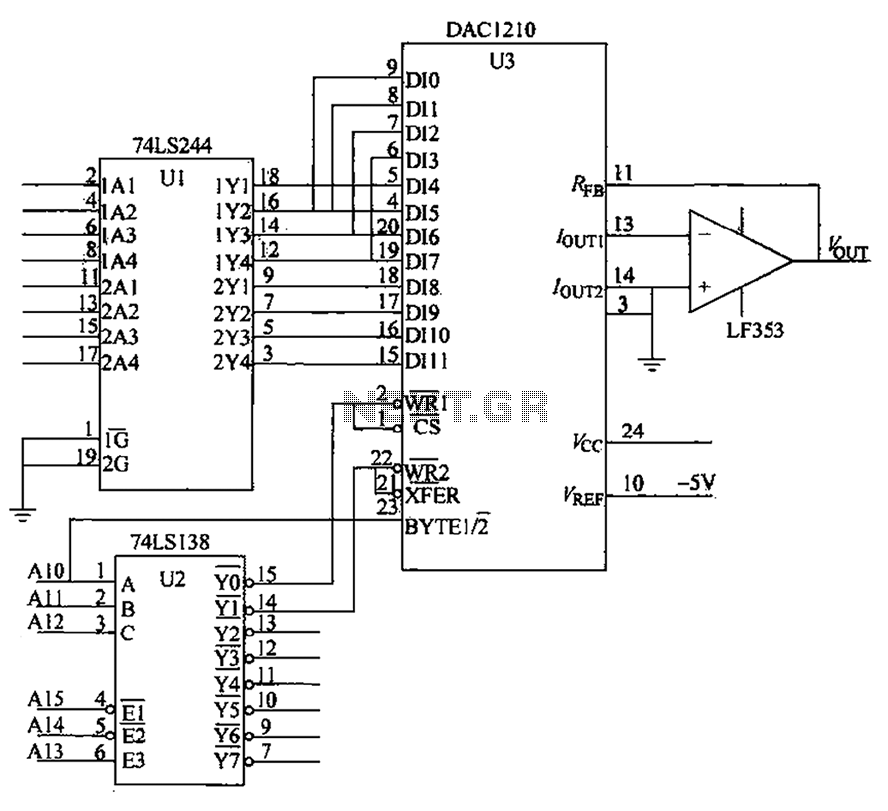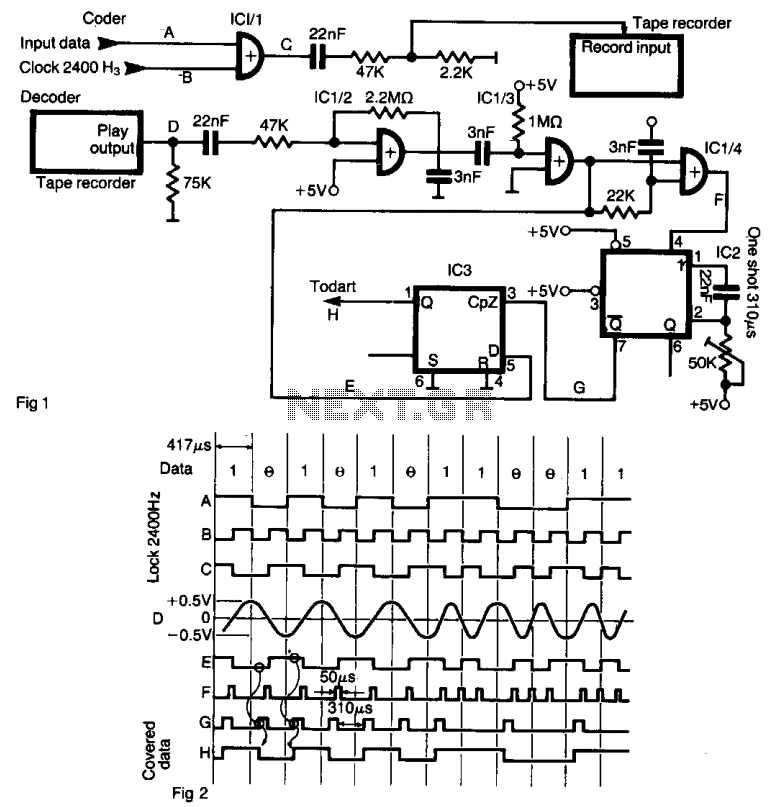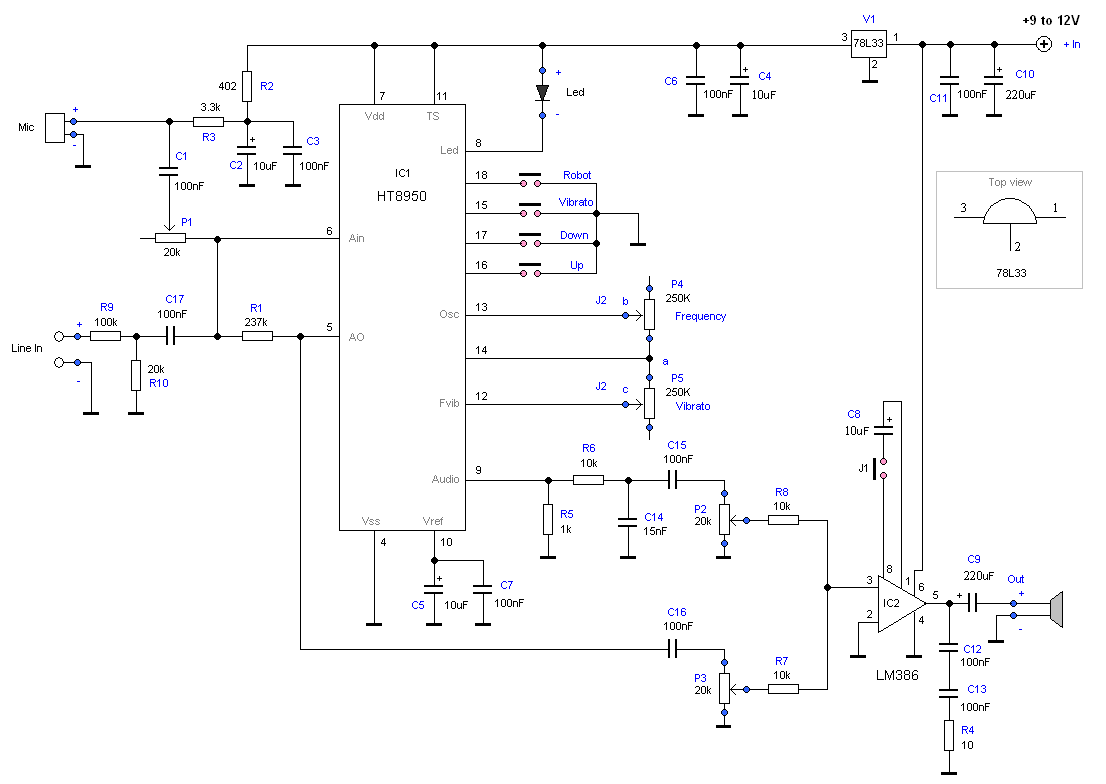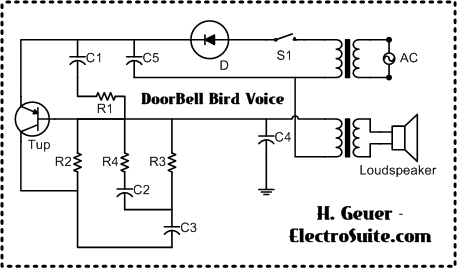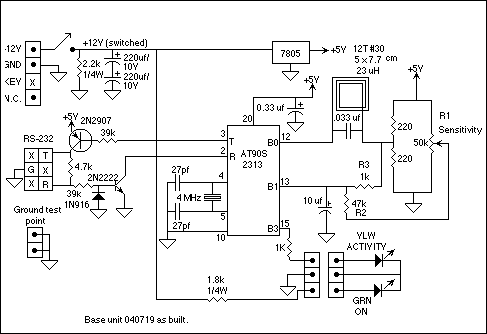
gps voice interface circuitry

The yellow wires on the far right serve as temporary power connections, allowing battery power to enter through the contact studs located in the large holes that press against the radio's battery terminals. The cable in the lower right is a miscolor-coded USB cable that facilitates audio transmission to and from the earbud and microphone on the helmet. Not all the pads are populated with components; not all parallel bypass capacitor locations were utilized due to the lack of interest in extensive self-resonance measurements. The TinyTrak3+ cable is soldered into the empty DB9 footprint located on the left side. This cable will be repurposed from the ICOM IC-Z1A interface on Mary's bike after the arrival of the new Wouxun KG-UV3D; it is hoped that inclement weather will provide an opportunity for this work.
The circuit described involves a temporary power supply setup using yellow wires, which connect to the battery terminals of a radio via contact studs. This arrangement is essential for providing power to the radio during testing or configuration phases. The use of large holes for the contact studs allows for a secure connection that can handle the necessary current flow.
The USB cable, which is incorrectly color-coded, plays a critical role in audio communication. It connects the helmet's earbud and microphone, enabling two-way audio functionality. Proper identification and management of cable connections are vital to ensure clear audio transmission and prevent any potential signal interference.
The mention of component pads indicates a custom circuit board design where not all available spaces are populated. This choice may stem from a strategic decision to optimize performance without overcomplicating the circuit with unnecessary components. The absence of certain parallel bypass capacitors suggests a focus on minimizing self-resonance effects, which can complicate signal integrity in high-frequency applications.
The integration of the TinyTrak3+ cable into the DB9 footprint is a key aspect of this design. This footprint is typically used for serial communication and its repurposing from the ICOM IC-Z1A interface indicates a modular approach to circuit design. Such adaptability allows for the reuse of components, promoting efficiency and cost-effectiveness in electronic system development.
Future plans include the installation of the Wouxun KG-UV3D, which suggests an ongoing evolution of the system. The anticipation of rainy days for this work implies that environmental conditions may dictate the timeline for completing the modifications, highlighting the practical considerations that engineers must often navigate in the field.The yellow wires on the far right are temporary power connections; battery power enters through the contact studs in those large holes that press against the radio`s battery terminals. The cable in the lower right is the mis-color-coded USB cable that carries audio to & from the earbud & mic on the helmet.
Not all the pads have components; I didn` t use all the parallel bypass cap locations because I wasn`t up for protracted self-resonance measurements. The TinyTrak3+ cable solders into the empty DB9 footprint over on the left. I must cannibalize that from the ICOM IC-Z1A interface in Mary`s bike after the next Wouxun KG-UV3D arrives; with any luck, there`ll be a rainy day or two for that work.
🔗 External reference
The circuit described involves a temporary power supply setup using yellow wires, which connect to the battery terminals of a radio via contact studs. This arrangement is essential for providing power to the radio during testing or configuration phases. The use of large holes for the contact studs allows for a secure connection that can handle the necessary current flow.
The USB cable, which is incorrectly color-coded, plays a critical role in audio communication. It connects the helmet's earbud and microphone, enabling two-way audio functionality. Proper identification and management of cable connections are vital to ensure clear audio transmission and prevent any potential signal interference.
The mention of component pads indicates a custom circuit board design where not all available spaces are populated. This choice may stem from a strategic decision to optimize performance without overcomplicating the circuit with unnecessary components. The absence of certain parallel bypass capacitors suggests a focus on minimizing self-resonance effects, which can complicate signal integrity in high-frequency applications.
The integration of the TinyTrak3+ cable into the DB9 footprint is a key aspect of this design. This footprint is typically used for serial communication and its repurposing from the ICOM IC-Z1A interface indicates a modular approach to circuit design. Such adaptability allows for the reuse of components, promoting efficiency and cost-effectiveness in electronic system development.
Future plans include the installation of the Wouxun KG-UV3D, which suggests an ongoing evolution of the system. The anticipation of rainy days for this work implies that environmental conditions may dictate the timeline for completing the modifications, highlighting the practical considerations that engineers must often navigate in the field.The yellow wires on the far right are temporary power connections; battery power enters through the contact studs in those large holes that press against the radio`s battery terminals. The cable in the lower right is the mis-color-coded USB cable that carries audio to & from the earbud & mic on the helmet.
Not all the pads have components; I didn` t use all the parallel bypass cap locations because I wasn`t up for protracted self-resonance measurements. The TinyTrak3+ cable solders into the empty DB9 footprint over on the left. I must cannibalize that from the ICOM IC-Z1A interface in Mary`s bike after the next Wouxun KG-UV3D arrives; with any luck, there`ll be a rainy day or two for that work.
🔗 External reference
Warning: include(partials/cookie-banner.php): Failed to open stream: Permission denied in /var/www/html/nextgr/view-circuit.php on line 713
Warning: include(): Failed opening 'partials/cookie-banner.php' for inclusion (include_path='.:/usr/share/php') in /var/www/html/nextgr/view-circuit.php on line 713
